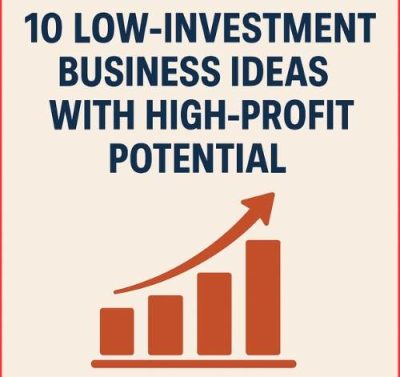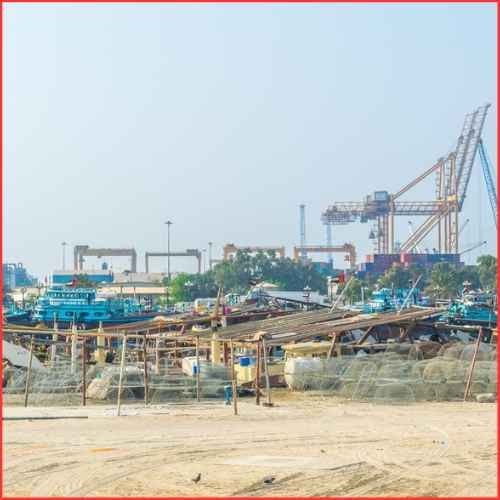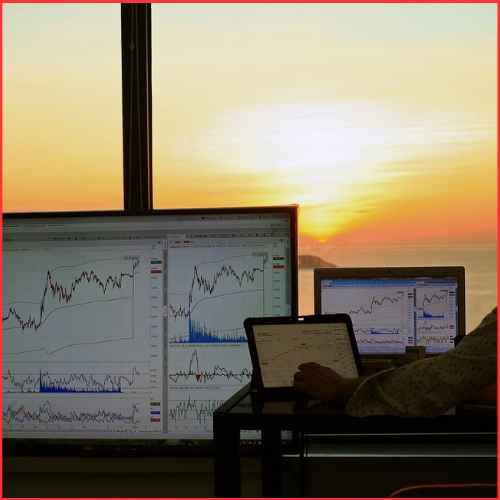The recent market meltdown of the Adani Group, a conglomerate in India, has shown some signs of improvement after a tour to restore confidence and a $1.9 billion investment from a high-profile money manager. However, a closer examination of the Adani Group’s empire reveals that investors still have concerns about the group’s long-term repayment abilities despite a temporary respite from fears of a debt blowup in the next three years.
The conglomerate’s stock-market slump and uncertainties over credit ratings continue to fuel concerns about its access to funds following fraud allegations made by a short seller.
These concerns persist even after the Adani Group’s renewed efforts to appease investors during a three-day roadshow in Singapore and Hong Kong, where executives stated that the conglomerate has sufficient funds to repay debt due over the next three years. A family trust also sold $1.9 billion worth of stock in four companies to GQG Partners, the US-based money manager led by Rajiv Jain.
“It’s certainly positive that he’s managing to sell some of his holdings and raise some cash,” said Kamil Dimmich of North of South Capital. “If we can see that engine resume where he can access financial markets again, that could stabilize things,” he said, referring to the billionaire.
The Adani Group has also cut expenses and made early debt repayment to alleviate a rout that has erased $153 billion from its stocks since the fraud allegations were made, which it has denied. The following indicators will likely prove key to money managers’ decisions on the conglomerate as its crisis of confidence continues to unfold. While most of Adani Group’s 15-dollar bonds are off their lows hit right after the fraud allegations, all but one are still in the red.
The group’s four notes due by the end of 2026 are trading between 84 cents to 94 cents on the dollar, down from 91 cents to 99 cents before the report, but still indicating relatively low-payment risk.
However, it is a different story for bonds with maturities further down the road. Seven of the group’s 11 notes due in or after 2027 are trading below or near 70 cents on the dollar, a level that defines distress or severe concerns about timely payment. After a rout that had erased almost two-thirds of their combined market value, the group’s 10 stocks staged a collective rebound Wednesday for the first time since the fraud allegations were made, led by a near 15% surge in flagship Adani Enterprises Ltd.
The latest gains have helped cut the conglomerate’s market wipeout to about $140 billion from a peak of $153 billion. However, it is still early days. Adani Total Gas Ltd., Adani Transmission Ltd, and Adani Green Energy Ltd., which racked up the biggest losses, remain 70% to 80% lower from their Jan. 24 levels. The short seller alleged that Adani’s seven key namesake stocks had sky-high valuations and faced a downside of 85%. Moody’s Investors Service, which cut its outlook for Adani Green and three other group firms to negative from stable last month, said that refinancing maturing debt, changes to capital-spending plans, and capital-raising efforts are key variables to watch.
.
Further rating actions could follow if the firms’ ability to raise capital is significantly curtailed, there is a significant increase in borrowing costs or deterioration of fundamentals. Similarly, S&P Global Ratings also downgraded the Adani Group’s outlook to negative in February. It said that Indian banks will likely charge higher risk premiums and become extra cautious in the aftermath of the crisis.
Of the seven key companies, five have minuscule analyst coverage, and even for the other two with more followers, the brutal selloff appears to The Adani Group, a prominent Indian conglomerate, has experienced a historic market meltdown which has caused investors to have doubts about the group’s longer-term repayment abilities, despite recent efforts to restore confidence. While fears of a debt blowup in the next three years have receded, concerns about the conglomerate’s access to funds following allegations of fraud by a short seller continue to linger.
During a three-day roadshow in Singapore and Hong Kong, Adani Group executives attempted to appease investors by assuring them that the conglomerate has enough money to repay debt due over the next three years. The family trust also sold 154.5 billion rupees ($1.9 billion) of stock in four companies to GQG Partners, a US-based money manager led by Rajiv Jain. While this has been viewed positively by some investors, doubts remain about the group’s longer-term repayment abilities.
The Adani Group has taken measures to alleviate the stock market slump and uncertainties over credit ratings, such as cutting expenses and making early debt repayment. However, the group’s 15-dollar bonds are still indicating relatively low-payment risk, with four notes due by the end of 2026 trading between 84 cents to 94 cents on the dollar. On the other hand, seven of the group’s 11 notes due in or after 2027 are trading below or near 70 cents on the dollar, indicating distress or severe concerns about timely payment.
After a rout that had erased almost two-thirds of their combined market value, the group’s 10 stocks staged a collective rebound on Wednesday for the first time since the fraud allegations were made. Nevertheless, Adani Total Gas Ltd., Adani Transmission Ltd., and Adani Green Energy Ltd. remain 70% to 80% lower from their Jan. 24 levels, and further ratings actions could follow if the firms’ ability to raise capital is significantly curtailed or if there is a significant increase in borrowing costs or deterioration of fundamentals.
While some investors remain optimistic about the conglomerate’s future, others believe that it is still too early to make investment calls due to the high volatility of the shares. The crisis has also spilled over into the ESG market, prompting JPMorgan Chase & Co. to remove exposure to the Adani empire from its relevant portfolios.
India’s top court has set up a panel to investigate allegations against the Adani Group and has requested that the local markets regulator investigate any manipulation in the group’s stocks and report its findings within two months. Overall, the conglomerate’s crisis of confidence continues to unfold, and key variables such as refinancing maturing debt, changes to capital-spending plans, and capital-raising efforts will be closely monitored by money managers.















